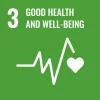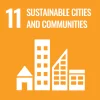
Our mission
Molnix is an impact business tightly connected with the UN Sustainable Development Goals. This means that both our business output itself, and the way we work, aim to have a positive impact on the global society, on our planet and on the economic development.
Ecological sustainability
- We prioritise circular economy when purchasing devices or equipment.
- We optimize code and make it greener to reduce our energy consumption.
- Our data centers run on 100% renewable energy.
Cultural & social sustainability
- We embrace our diversity and our global connections from where we are based, in Finland.
- We put data protection and privacy in our top priorities. Read more about our GDPR Proof.
- Our core values in employee well-being are transparency, equality and a strong sense of community.
Economical sustainability
- Our mission is to enable the humanitarian organizations to effectively manage human resources under crises while saving time and money.
- Our goal is not to maximise profit but to maintain profitability while fulfilling our mission by letting our customers focus on their work.
Sustainable development goals
At Molnix, we are committed to advancing the Sustainable Development Goals both directly through our own operations and indirectly by empowering humanitarian organizations. Our technology enables these actors to deploy personnel more efficiently to crisis situations – helping them respond faster, act more effectively and save more lives.
Rapid Personnel Manager
Our solution, Rapid Personnel Manager, plays a critical role in accelerating humanitarian response. By enabling fast deployment, we not only support live-saving interventions but also increase community resilience and improve recovery after emergencies. Through this, our impact touches all 17 SDGs.
In particular, RPM contributes to SDGs 1, 3, 11 and 13.
Internal operations
Sustainability is also at the core of how we operate. We actively minimize our environmental footprint, foster a healthy and inclusive workplace culture and provide an open-source, cost-effective and resource-efficient solution for our clients. By collaborating closely with our partners, we strive to build a more sustainable and equitable future.
Through these efforts we contribute especially to the SDGs 8, 9, 13 and 17.






